Rosa Banksiae Profile
Written by Lisa
Oct 19 2021
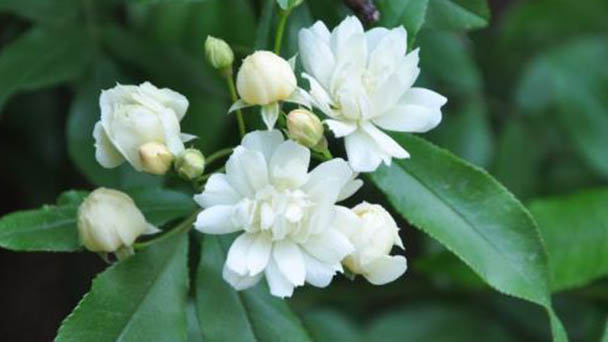
Rosa banksiae Ait. (Lady bank rose) is a small climbing shrub, up to 6 meters in height; branchlets are cylindrical, glabrous, with short prickles; leaflets 3-5, elliptic oval or oblong-lanceolate leaves, small flowers, many umbrellas Shaped inflorescence, ovate sepals, double to semi-double petals, white, obovate, flowering period from April to May. In the bushes along the riverside, roadside or hillside, 500-1300 meters above sea level.
Rosa banksiae Pictures
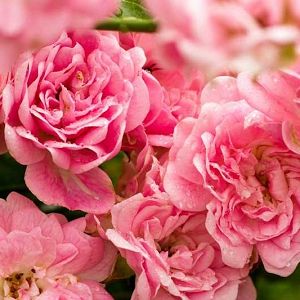
rosa banksiae pink
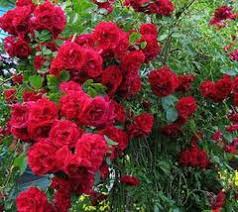
rosa banksiae red
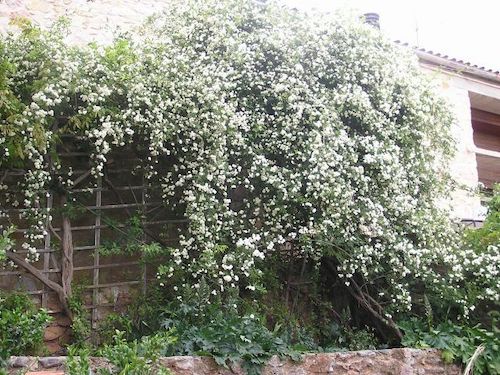
rosa banksiae white
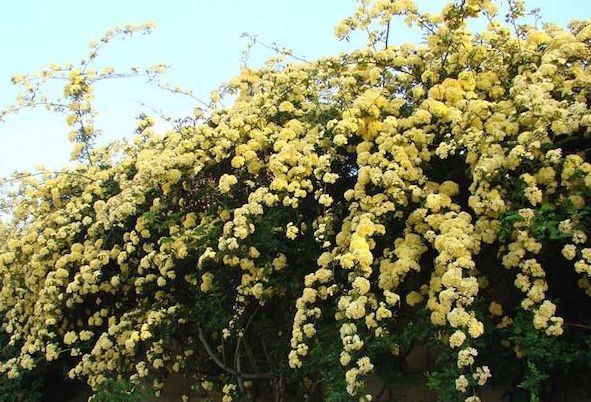
rosa banksiae yellow
The flowers contain aromatic oils, which can be used to formulate fragrance cosmetics. Famous ornamental plants, suitable for hedges and trellis. The roots and leaves are used as medicine. It has astringent, anti-diarrhea and hemostatic effects.
Rosa banksiae Morphological characteristics
Rosa banksiae is a climbing shrub plant that can reach 6 meters in height. The branchlets are cylindrical, glabrous and have short prickles; the prickles on the old branches are larger and hard, and sometimes the branches are thornless after cultivation. Leaflets 3-5, sparsely 7, even petiole 4-6 cm long; leaflets elliptic ovoid or oblong-lanceolate, 2-5 cm long, 8-18 mm wide, apex sharply pointed or slightly obtuse, base subrounded Shaped or broadly wedge-shaped, with tightly serrated edges, glabrous on top, dark green, light green below, midvein protruding, pilose along the vein; small petioles and leaf shafts with sparse pilose and scattered small prickles; stipules Linear-lanceolate, membranous, free, early fall.
The flowers are small, many in umbels, 1.5-2.5 cm in diameter; pedicel is 2-3 cm long, glabrous; sepals are oval, apex is long and acuminate, entire, outer calyx tube and sepals are glabrous, inner surface is covered White pilose; petals double to semidouble, white, obovate, apex rounded, base cuneate; carpels are numerous, styles are free, densely pilose, much shorter than stamens. Flowering from April to May.
Rosa banksiae Growth habit
Rosa banksiae likes sunlight, is also tolerant to half shade, and is more resistant to cold. It is suitable for growing in fertile and humid land with good drainage. It can live through the winter openly in most parts of northern China. The soil requirements are not strict, drought-tolerant, and barren-tolerant, but it grows better when planted in deep, loose, fertile, moist, and well-drained soil, and it can also grow normally on heavy soil. Not tolerant to water and wet, avoid standing water.
Rosa banksiae Cultivation Methods
Potted Rosa Banksiae
Prepare nutrient soil. To prepare nutrient soil, attention should be paid to drainage, ventilation and the combination of various nutrients. The ratio is garden soil: leaf rot soil: hull ash = 5:3:2. Every year before and after overwintering, it is suitable for potting, repairing roots, and replacing soil, increasing the pot diameter year by year, preferably mud tile pot.
Watering: It varies from season to season. Keep the soil moist during dormancy in winter and do not dry out. Before the spring branches begin, the branches and leaves grow, increase the amount of water appropriately, and water once a day in the morning and evening. Increase the amount of watering during the peak growing season and flowering period. The high temperature in summer and the increase in water evaporation will make the rosa banksiae in a weak and semi-dormant state. Dry dehydration is the most avoided. Water once a day in the morning and evening to avoid sun exposure. When watering at high temperature, a small amount of water should seep out from the bottom of the basin each time, indicating that it has been watered. Do not splash water on the leaves during watering to prevent disease.
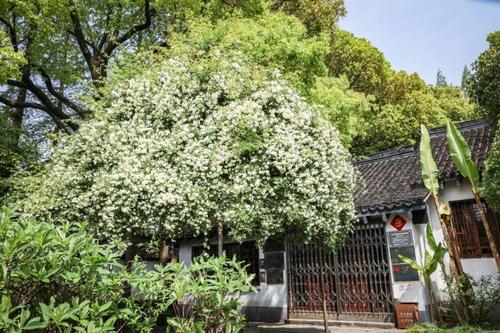
Fertilization: Rosa banksiae likes fertilizer, and the base fertilizer is mainly late-acting organic fertilizer. Add liquid fertilizer and water once every half month to keep the leaves thick, dark green and shiny. Before sprouting in early spring, you can apply a thick liquid fertilizer once, pay attention not to apply fertilizer during the flowering period, apply again after the flowers die in June, and apply a medium liquid fertilizer again in September when the fourth or fifth axillary buds will emerge. Apply mature organic fertilizer to overwinter during the monthly dormancy period.
Pruning: Full pruning must be carried out after the blooming of the first bloom in each season. Generally, light pruning is recommended, and the open residual flowers and thin, crossed and overlapping branches should be cut in time, and the thick, young branches should be left only 3-6 cm from the base, and the outer buds should be pruned into a natural and happy shape to make the plant beautiful. , Prolong the flowering period. In addition, potted Rosa banksiae should be short-grown, multi-flowered and rich in fragrance.
Ground plant
The distance between the Rosa banksiae plants in the scented flower field is 50-100 cm, depending on the size and needs of the seedlings. In addition, the Rose flower cultivation area must be sunny, dry, ventilated, well-drained, sandy soil rich in organic matter.
Watering: When planting Rosa banksiae in the ground, it is important to water enough water during drought in summer, especially during the gestation bud period and flowering period, and ensure sufficient water supply. At the same time, pay attention not to accumulate water in the rainy season.
Fertilization: Organic fertilizer can be applied in winter plowing, and then turned into the soil, rose peanuts should be fertilized frequently for a long time, and topdressing 1-2 quick-acting fertilizers after the flowers die. In high temperature and drought, thin fertilizer should be applied, and the last fertilizer should be applied before winter, and weeds should be removed in time before applying fertilizer.
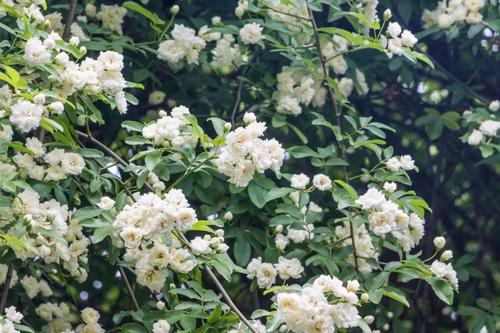
Pruning: In summer, pruning the Rosa banksiae is mainly to cut off the budding flowers of the grafted rootstock, after the flower, cut off the residual flowers and remove the redundant flower buds, reduce the consumption of nutrients and create good conditions for the next flowering. In order to make the plant beautiful, cut 1/3 or half of the long branches, 1/3 of the middle branches, and cut diagonally 1 cm above the leaves. If the pruning is too light, the Rosa banksiae plants will grow taller and taller. The longer and thinner, the smaller the flowers bloom. Winter pruning depends on the variety and the purpose of cultivation. When pruning, you should leave branches and pay attention to the overall shape of the Rosa banksiae. For large-flowered varieties, you should leave 4-6 branches, 30-45 cm long, and choose one side to grow strong buds. The upper branches, trailing or vine varieties are mainly based on removing old techniques, pruning weak branches, diseased branches and cultivating main stems.
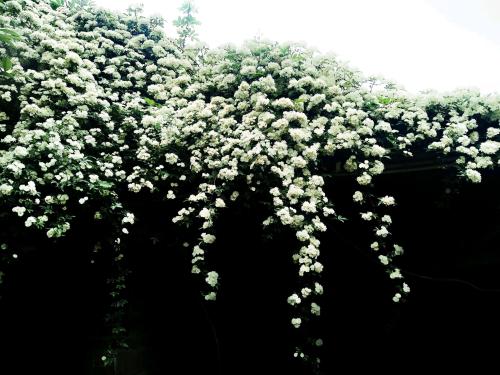
Rosa banksiae propagation
sowing
Seeds can be used for growing seedlings, but because by seed cultivation Rosa banksiae is difficult to survive, it is generally not recommended to use seeds for cultivation. In production, it is easy to survive by cutting the twigs of the year. Rare varieties are more difficult to cut.
Ramets
It is a method of reproduction in which the small branches from the root and stem base of the plant are cut off from the place where the mother plant is connected, and then planted separately to make Rosa banksiae grow into independent new plants. This method is simple and easy to implement and survives quickly.
Cuttings
Cuttings, also known as cuttings, are a common propagation method for cultivating plants. It is easy to survive by cutting seedlings from the twigs of the year. Choose healthy and disease-free branches for cuttings. After the cuttings are selected, they must be handled carefully. Twig cuttings should be cut immediately after harvesting to prevent wilting from affecting survival. Generally, the Rosa banksiae cuttings is like some freshly burned plant ash, which can prevent rot. Generally, cuttings of plants can take root at 20-25℃. If the temperature is too low, the rooting will be slow, and if the temperature is too high, the cutting cut will rot. Therefore, if the temperature is controlled artificially, cuttings can be made throughout the year. Under natural conditions, the temperature in spring and autumn is appropriate. After cutting, pay attention to keeping the cutting substrate moist, but not to make it too wet, otherwise it will cause rot. At the same time, you should also pay attention to the humidity of the air. You can keep the humidity by covering the plastic film, but pay attention to ventilation within a certain period of time.
Layering
The older branches of the fine varieties of Rosa banksiae should be selected for the reproduction of the sylvestris, and the seedlings should be raised by the layering method. Layering is a method of embedding the branches and vines of plants in a moist substrate, and cutting them away from the mother plants after they take root to form new plants. The adult plant rate is high, but the reproduction coefficient is small, and it is mostly used when it is difficult to reproduce by other methods or to reproduce larger new plants. Layering is a method of artificial asexual reproduction (vegetative reproduction) of plants. Unlike grafting, the branches remain intact, that is, they do not break away from the mother plant, and a part of it is buried in the soil, and then it is disconnected from the mother plant after it takes root.
grafting
The seedlings that are reproduced by grafting method can bloom in the same year. For the seedlings of potted flowers, the older branches of the fine varieties should be selected.
Pest control of Rosa banksiae care
There are few diseases and insect pests in wild Rosa banksiae. The artificially cultivated species often include saw bees, rose leaf bees, scale insects, aphids, and scorch leaf disease, canker disease, black spot and other diseases and insect pests. In addition to spraying with liquid medicine, the setting should be It is not suitable for planting too much in one place. Every winter, the old branches and dense branches are often pruned intensively to keep light and well ventilated to reduce pests and diseases.
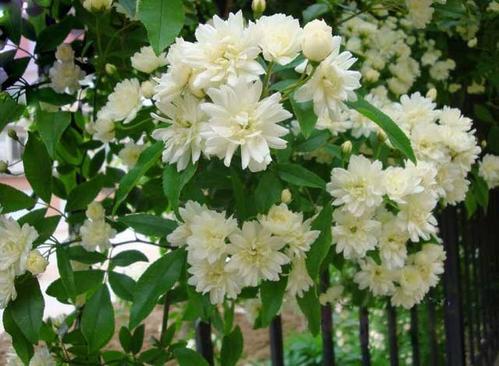
Powdery mildew
Leaves, petioles, tender shoots and flower buds can all be affected. Irregular white powdery mildew occurs on the adult leaves, and the diseased leaves gradually brown from the tip or edge of the leaf, causing the whole leaf to dry and fall off. The tender leaves are infected, the chlorosis spreads, and gradually expands, and the edges are not obvious. White pink spots appear on both sides of the front and back of the tender leaves, and then the whole leaves are covered, and the leaves become light gray or purple-red. New leaves shrink deformity. After the petioles and new shoots are infected, the internodes shorten, the stems become thinner, some diseased shoots appear withered, and the diseased parts are also covered with white powder. The flower buds are infected, the flower buds and pedicels are covered with white powder, the calyx, petals, and pedicels are deformed. The severe ones shrink and die and lose their ornamental value. Powdery mildew overwinters on diseased buds. Planting too densely, applying too much nitrogen, poor ventilation, and insufficient sunlight are prone to disease.
Control method: select powdery mildew resistant varieties. When pruning in winter, cut off diseased branches and buds. During the onset period, apply less nitrogen fertilizer and increase phosphorus and potassium fertilizers to improve disease resistance. Pay attention to ventilation and light, and timely drainage after rain to prevent moisture retention and reduce disease. In the early stage of the disease, spray 1000 times of 20% triadimefon EC or 1000 times of 20% triadimefon sulfur suspension, and 800 times of 50% carbendazim wettable powder. If it is resistant to the above-mentioned fungicides, spray 12.5% myclobutanil EC or 30% Teflon wettable powder 3000 times. Before budding in early spring, spray Baume 2-3 degree lime sulfur mixture or 45% crystal lime sulfur mixture 40-50 times to kill overwintering bacteria.
Black spot
It mainly affects the leaves, petioles and tender shoots. When the leaves of Rosa banksiae are first onset, purple-brown to brown spots appear on the front, and they are mostly round or irregular black-brown spots after they are enlarged. Can spray carbendazim, thiophanate methyl, dakenine and other drugs.
Anthrax
The lesions are formed on the leaf margins, semi-circular, the edges of the lesions are dark brown, the middle is brown to light brown, and small black spots appear on the lesions in the later stage. The germs overwinter on diseased leaves. Under warm and humid conditions, spores germinate and attack leaves. The plant clusters are too dense, the moisture retention time is long, and it is prone to disease. Anthracnose occurs sporadically, and can be treated concurrently when preventing black spot and leaf spot. The garden was cleaned in time at the end of autumn and early winter, and the diseased leaves were collected and burned. Strengthen maintenance, proper pruning of Rosa banksiae, thinning out dense branches, and good ventilation and light transmission.
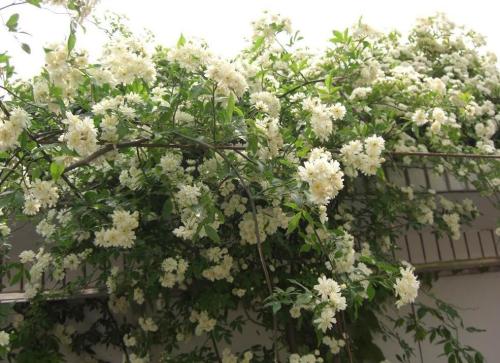
Chafer
It mainly damage roots, leaves, flower buds and other parts of Rosa banksiae, seriously affecting flower yield and quality. Light trapping, willow trapping, oscillation trapping, etc. When the damage is serious, spray 2.5% deltamethrin 2000-3000 times solution or 50% phoxim 1000-1500 times solution. The effect is good, but it must not be sprayed during the flowering period of Rosa banksiae.
Leaf rust
Rust disease is a common disease of Rosa banksiae. Both leaves and new branches may be sick. If the condition is serious, it will cause the leaves to fall off in a large area, which will cause the flowers to lose their ornamental value and even die. If you find this disease, you should treat it in time. You can use 800 times liquid triadimefon foliar spray, once a week, for 3-4 consecutive, the disease can basically be cured.
Latest Updated
- Benefits of Bugleweed - 7 Science-backed Health Benefits
- Bugleweed Dangers & Side Effects - Is It Poisonous?
- How to Plant Evergreen Trees - What You Should Know
- When to Plant Evergreens - Grow Guide for Evergreen Trees
- 12 Wonderful Evergreen Shrubs for Your Garden
- 12 Popular Evergreen Plants with Pictures for Beginners
- When And How To Prune A Lilac Bush Like a Pro
- How to Grow & Care for Lilac Vine (Hardenbergia Violacea)
- Japanese Lilac Tree (Syringa Reticulata) Care & Propagation Guide
- Shumard Oak Pros and Cons - What to Know
Popular Articles
- Winter maintenance of Antirrhinum Majus
- How to Grow Terminalia Mantaly Tree
- How to Grow and Care for Crossostephium Chinense
- How to grow Antirrhinum Majus in spring
- Peristeria Elata (Dove Orchid) Profile: Info & Care Guide
- Underwatered Snake Plant (Sansevieria Trifasciata) - Signs And How To Fix
- How to Care for Brazilian Jasmine Plant (Mandevilla Sanderi)
- How to Grow & Care for Graptopetalum Purple Delight in Summer
- Rosa Chinensis (China Rose): Plant Growing & Care Tips
- How to Care for Baby Sun Rose (Aptenia Cordifolia)